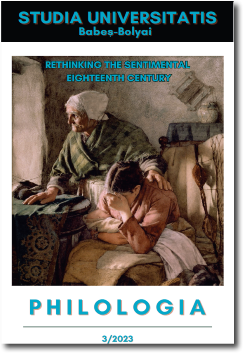INTRODUCTION
Abstract
Now is an opportune moment to rethink the legacy of sentimentalism so dominant in eighteenth-century Western European literature and culture. Contemporary interest in the “truth of emotions” and the affective basis of “lived experience,” whereby the individual’s somatic and subjective responses to stimuli are held to gainsay objectively verifiable data and recorded events, impels us to turn once more to the period in which arguments about mind-body relations, the hierarchy of passions, the function of reason as a regulator of human affairs and the irreducible force of feeling first entered the realm of debate. It was in the eighteenth century that the term “sentiment” became the broad-spreading umbrella under which clustered the cognates “feelings,” the “heart,” “sensibility,” “emotions,” the “affecting,” “tears,” “faints,” “being moved,” all words that carry within them a suggestion of some irresistible force acting on the rational individual. Henry Mackenzie’s “man of feeling” centres on one protagonist the age’s preoccupation with the idea that sentiments define not just us as people, but our moral compass and whole mode of being in the world. Sentimentality thus emerged as the motive force not only behind the plots of novels, the period’s defining mode of literary production, but the sum of our understanding of what it meant to be alive in the world. It is therefore timely for this special issue of Studia Philologia to re-examine the eighteenth-century’s formulations of sentimentality as we question once again the function of emotions in human subjectivity.
References
Boddice, Rob. 2020. “History Looks Forward: Interdisciplinarity and Critical Emotion Research.” Emotion Review 12, no .3 (July): 131-34.
Smith, Adam. 1761. The Theory of Moral Sentiments. 2nd ed. London: Printed for A. Millar.
Downloads
Published
How to Cite
Issue
Section
License
Copyright (c) 2023 Studia Universitatis Babeș-Bolyai Philologia

This work is licensed under a Creative Commons Attribution-NonCommercial-NoDerivatives 4.0 International License.





 ©Studia Universitatis Babeş-Bolyai Philologia. Published by Babeș-Bolyai University.
©Studia Universitatis Babeş-Bolyai Philologia. Published by Babeș-Bolyai University.